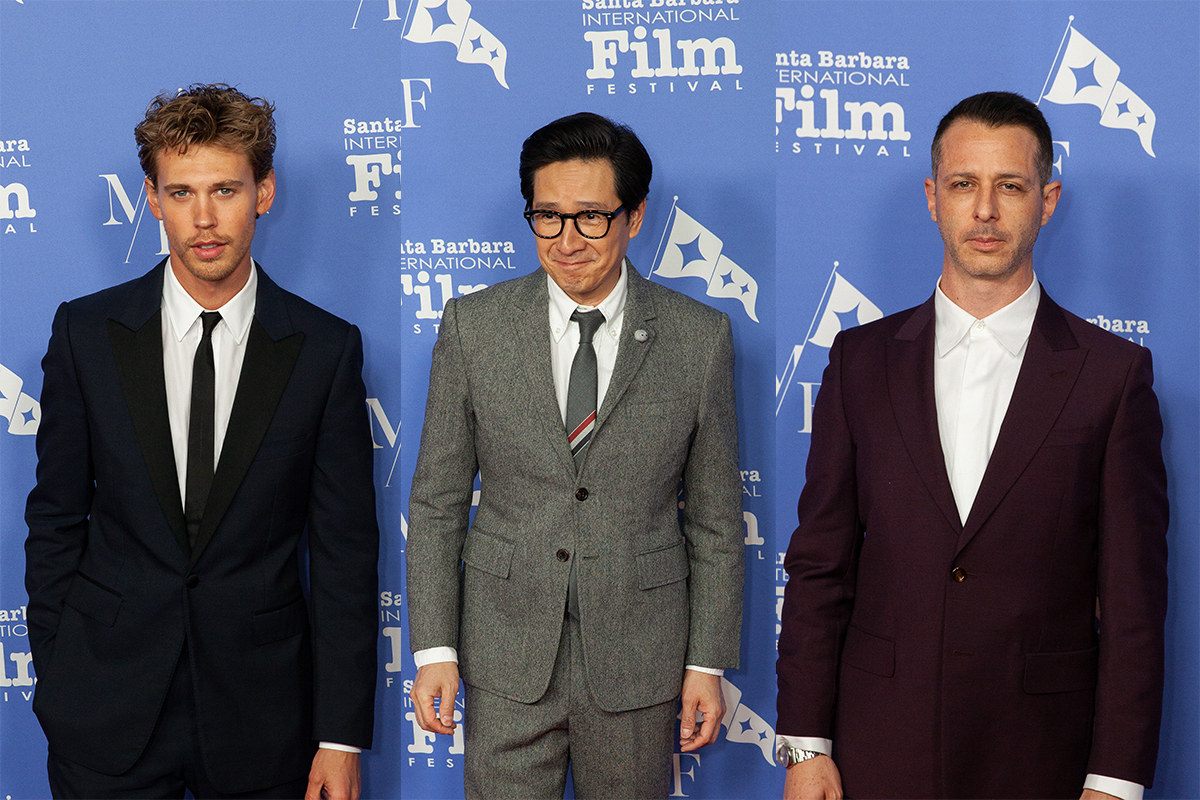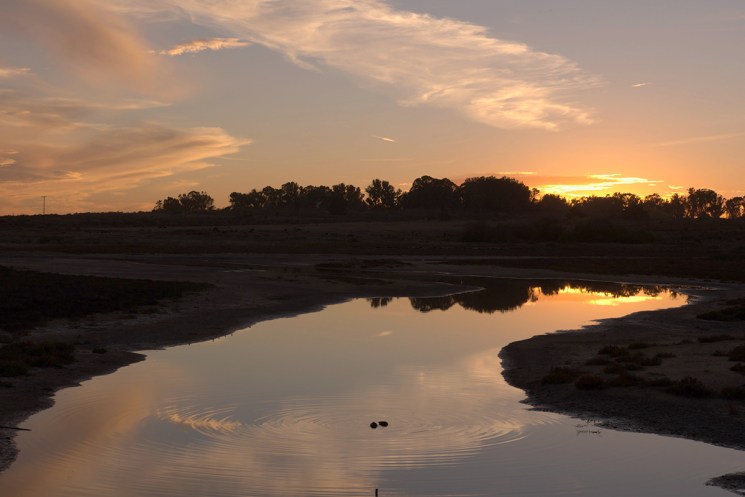
Even if you are part of the throng, or what Santa Barbara International Film Festival head Roger Durling referred to as the cinephile “tribe” during his festival-opening speech, which believes the most gratifying takeaway from the festival is its international cinema menu options, there’s just something magical about that mythic movie star buzz/fizz. They’re just different than the rest of us mortals.
I remember lurking with the crowd waiting, and waiting, and waiting for the more than fashionably late Johnny Depp to show up at the Arlington theater several years ago — this before his coolness-shattering domestic abuse trials. When Deep did deign to pop by and saunter down the red carpet, there was a certain detectable sizzle in the air. In a more modest way, a sizzling sensation could be felt last night at the Arlington’s Virtuoso Awards, when the straggler Austin (Elvis) Butler slowly wandered down the red carpet zone, serious dimples in tow, it was as if Elvis was entering the building, or at least some modest facsimile thereof.
True to Durling’s introduction to Wednesday’s program, which started modestly 21 years ago and is now a hit of the SBIFF offerings, this gathering of high-profile newcomers and spotlight-grabbing veterans suddenly grabbing the spotlight has become a “signature event” of the festival.
One actor who has “been around” but finds himself bumping up in attention is Jeremy Strong, impressive in the role of the character based on writer-director James Gray’s father in Gray’s semi-autobiographical film Armageddon Time (Strong is also known from TV’s Succession). Gray had described his father as “a Jewish Stanley Kowalski with a PhD.” In taking on the role, Strong said, “the onus on me felt massive, to capture his essence but put my stamp on it.” After moderator Dave Karger, from TMC, affirmed that he had “nailed it,” Strong noted that Gray had told him “don’t nail it, which is a wonderful thing to hear a director say. He just wanted you to be honest.”
From an entirely different corner of the 2022 movie sphere, the spotlight turned to veteran actor turned film handyman/chameleon turned actor Ke Huy Quan, of Everything Everywhere all at Once fame. After seeing the expansion of quality roles for Asians, beyond stereotypes and marginal parts, in such films as Crazy Rich Asians, Quan wanted back in. Everything was the perfect vehicle, which won him an Oscar nom. “I grew up in a culture where I was taught to hide my feelings,” he said. In this unusual but heartfelt film, he commented, “I knew I needed to open up and pour myself into this character. It’s ok to show weakness.
“We’re in the thick of the awards season and I just want to be in the moment, because I never thought I would be here,” Quan said.
A Major Win for Mother Nature

In my brief and less-than-stellar life as a golfer, my superior golfer son and I sometimes headed out to the course known officially as Ocean Meadows. (In the unofficial local vernacular, it was sometimes referred to as Oh Shit Meadows.) On one such round, I took a hearty swing and hit the grass instead of the ball. Our assigned golfing partner quipped, “oh, you just hit the big ball before you hit the little ball.”
Fast forward several years and, through a miraculous environmental reclamation project, Ocean Meadows has turned into North Campus Open Space, the inspiring and massive wetlands space which defined this area pre-golf course. The area is now all about “the big ball.” Bringing Back Our Wetlands comes to us thanks to filmmaker Michael Love — whose several films at SBIFF include a deserved portrait of legendary street guitarist Bruce Goldish — who spent about 10 years following the slow but steady progress of this literal back to nature effort.
He unveils the historical and natural background of the space, home to the Chumash for over a thousand years, when the Goleta bay was dreamy area of estuaries, wetlands, waterways, and canals. When the property came available again, an effort to reclaim was set into motion, with Lisa Stratton as the spearhead. The heroic Trust for Public Land was part of a consortium raising the seven million dollar price tag, and UCSB was enlisted to research and maintain the property. Locals, including groups of students, helped plant natives in the area, and the once-thriving bird population returned along with other animals.
Love’s documentary will be especially fascinating for Santa Barbarans, who can rightfully take pride in this unusually massive example of the strong preservationist ethic in the area. We can also see, feel, and admire the end result by heading out by the Deveraux-adjacent property. But the project, and this film, might also serve as a paradigm for other similar projects elsewhere, where mother nature might be allowed to take revenge and reclaim her natural state.
Life on the Row

Director Paul Freedman has pulled off something remarkable with his documentary The Dirty Divide, an inspiring “you are there” chronicle of life in downtown Los Angeles’ infamous Skid Row. As we learn, the area on the fringe of gentrified zones in the downtown, long a gathering spot for the houseless and subject to various “clean up” attempts by government and police, is the most densely populated such area in the western hemisphere. Five people a day die there, and the community of people living on the streets, in and out of tents, only increased during Mayor Garcetti’s campaign to deal with the problem and “house the homeless.”
But what makes Freedman’s film so impactful, and a call to action and compassion, is his ability to focus in on specific Skid Row residents to create a tapestry of personalized character studies, to humanize the problem. As Freedman said in a post-screening Q&A on Wednesday afternoon (the film replays on Friday at 8 p.m.), “hopefully the film can be a tool to raise awareness and change perceptions… not to see people there as spectral ghosts. They are us.”
Freeman noted that, far beyond Skid Row and other dramatic examples, houselessness is epidemic, noting that “last night, I saw five houseless people outside this theater, freezing.”
Also at the Q&A, and a critical part of the documentary and facilitator for Freedman’s project, was Pete White, head of the activist organization LA CAN added that “it’s going to take all of us to right the ship.” Also in the house — several of the “stars” of the film. Needless to say, it was a film with a highly personal stamp, about a dire situation just down the freeway apiece from our little paradise.




You must be logged in to post a comment.